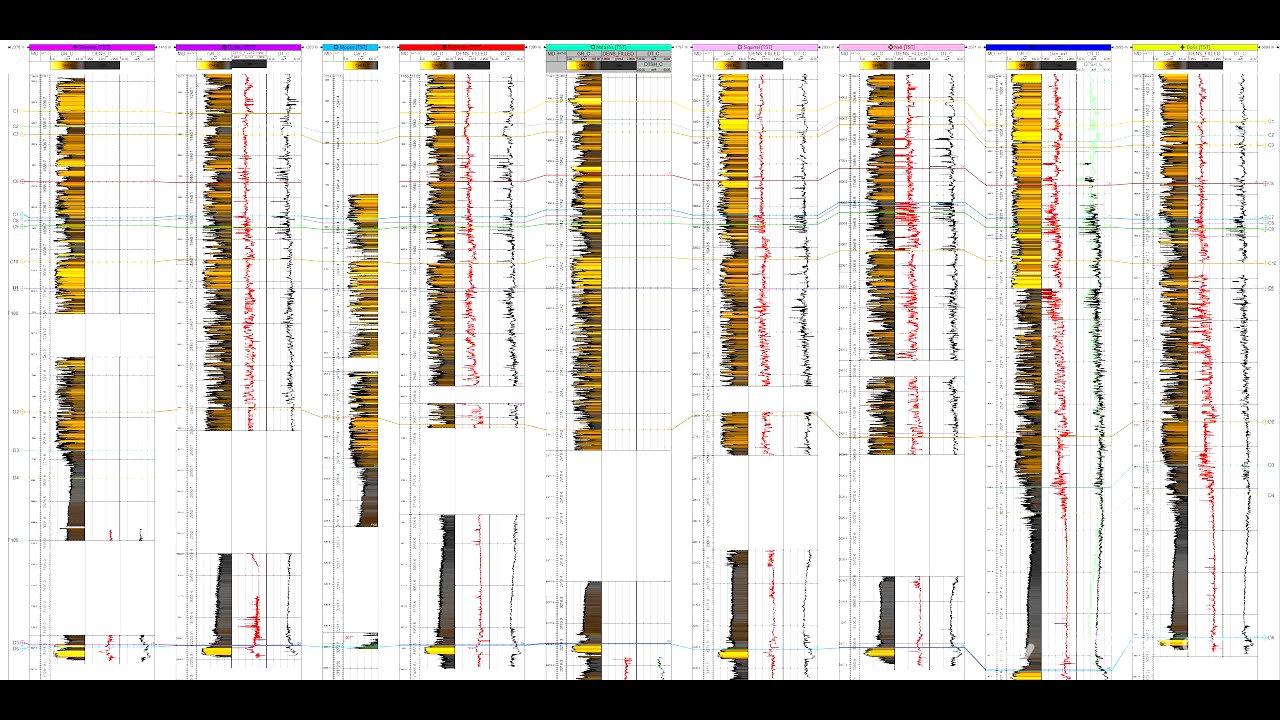TLDR;
This video provides a workflow for accurately representing faults in well correlations, focusing on the use of True Stratigraphic Thickness (TST) to display fault gaps and improve the geological sense of well correlations. It covers updating time-depth relationships, inputting fault tops, calculating stratigraphic thickness, and adjusting fault parameters like dip angle and throw to ensure accurate representation of missing sections.
- Updating time-depth relationships ensures accurate placement of new data.
- TST domain is crucial for correctly displaying fault gaps.
- Adjusting dip angles and throw values refines fault representation.
Introduction [0:00]
The video introduces the problem of accurately representing faults interpreted from seismic data in well correlations. It highlights the common issue of fault interpretations not being properly reflected in well correlations and introduces a workflow to address this. The focus is on using True Stratigraphic Thickness (TST) to display fault gaps effectively and create more geologically sound well correlations.
Geological Context [0:33]
The area under consideration features several fault blocks with numerous extensional faults. The demonstration focuses on a large green fault and its associated throw. The area is populated with several wells, many of which intersect the green fault, while a couple of wells on the eastern side, Boris and Peabody, do not.
Initial Well Correlation [1:14]
The initial well correlation shows that wells Boris and Peabody have complete sections of a particular shale layer. However, wells on the western side of the fault exhibit reduced shale sections due to fault cutouts. This difference highlights the need to capture fault information accurately as formation tops or fault tops in the well correlation.
Updating Time-Depth Relationship [1:54]
To ensure accuracy, the first step is to update the time-depth relationship. This ensures that any additions to the well correlation are immediately placed correctly on the sections. This is done via the synthetic panel, ensuring edit mode is turned on, accessing the study, and setting the current time-depth relationship as active.
Inputting Fault Tops [3:24]
To input a fault top, navigate to stratigraphy and select "edit welltops". Choose the relevant fault (e.g., F100) or create a new one, ensuring the formation top colour matches the fault colour. After activating the fault top, place it approximately on the well log and adjust it using log signatures, such as sonic and density breaks, to pinpoint the precise location.
Calculating True Stratigraphic Thickness [4:55]
To address the missing section caused by the fault, switch to True Stratigraphic Thickness (TST) mode. Before doing so, it's essential to run the thickness calculation in well settings. Ensure the interpreted markers are selected, the undefined dip and azimuth are set to zero, and then run the calculation to generate a global well log called "true stratigraphic thickness".
Adjusting Fault Parameters in TST Mode [6:13]
In TST mode, formation tops should appear roughly parallel. Open the well markers spreadsheet to adjust the missing section value, which is negative for missing sections and positive for repeated sections. Input the dip azimuth (determined from the fault's strike) and estimate the dip angle. Adjust these parameters until the welltop disc aligns tangentially with the fault.
Refining Throw and Dip [8:52]
The missing section value represents the throw along the fault, not the vertical offset. For low-angle faults, this value needs to be significantly greater. Adjust the throw value until the formation tops above and below the shale layer are roughly parallel, indicating the correct amount of throw for the fault. If the display doesn't update after changes, switch between SSTVD and TST to refresh it.
Conclusion [10:32]
The video concludes by emphasising the benefits of this workflow for creating more coherent well correlations in areas with numerous faults. It encourages viewers to implement these techniques to improve their interpretations and offers seismic interpretation training services.









